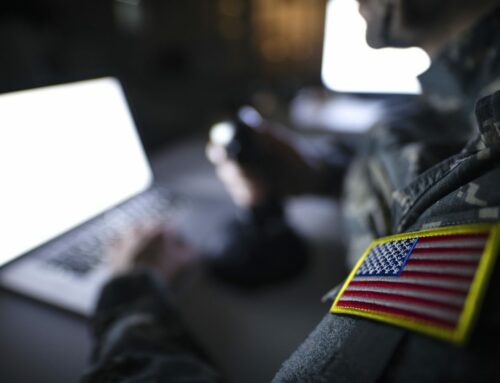The GSA is determined to have a Governmentwide acquisition contract (GWAC) for small business to provide small businesses a path to provide customized IT solutions to Government clients. The last attempt was a “falling star” called Alliant 2 – the latest effort, the Polaris Small Business GWAC, will have small businesses reaching for the stars again.
Polaris GWAC Background:
The abysmal failure that was the ill-fated Alliant 2 effort resulted in the recission of more than 80 contracts following a Court of Federal Claims decision. One of the major issues that led to the decision was the fact that offerors failed to substantiate claimed points for their cost accounting systems. The GSA is hoping that the lessons learned from that debacle will result in a more successful procurement action.
Polaris GWAC Program Key Information:
The Alliant 2 ceiling had been established at $2B but the draft Polaris RFP indicated that there is no maximum dollar ceiling!
There will most likely be three pools based upon size and socioeconomic status. They are:
- Small Business
- HUBZone
- Women Owned Small Business
The procurement will be primarily for customized IT services but some ancillary support may be included when integral to the IT effort. There will most likely be no pricing required since the intent is to establish pricing at the individual task order level. The resulting task orders issued under the IDIQ vehicle will cover the spectrum of contract types providing the GSA clients with a great degree of flexibility in ordering.
Polaris GWAC RFP Requirements:
The response to this solicitation will be a complicated affair requiring a large amount of information for not only the Prime but for subcontractors, as well as JVs and CTAs.
The Polaris GWAC response is expected to entail six volumes (page counts have not been established, as of yet):
- Volume 1 – General
- Volume 2 – Relevant Experience
- Volume 3 – Past Performance
- Volume 4 – Systems, Certifications, and Clearances
- Volume 5 – Risk Assessment
- Volume 6 – Responsibility
Volume 2 will be the meat and potatoes of your response with Relevant Experience content required across five potential NAICS as well as your experience with projects of similar size and complexity, working with multiple Federal customers, and performing on cost reimbursement contracts, and task orders on other multiple-award contracts. You will also need to address OCONUS work, experience with subcontracting, cloud, and cybersecurity services. Finally, you’ll need to describe your experience in what the GSA is calling “Emerging Technology:”
- Advanced and Quantum Computing
- Artificial Intelligence
- Automation Technology
- Distributed Ledger Technology
- Edge Computing
- Immersive Technology
For Past Performance, you will need to submit not only your write-ups but also Federal Procurement Data System-Not Germane (FPDS-NG) reports for each relevant contract. If the FPDs-NG report is not available, then you will also need to submit copies of original contract award documents and statements of work/performance work statements for the cited work.
Volume 4 is the volume containing evidence of your DCMA-approved cost account system, CMMI certification, ISO 9001/20000/27000 certifications, and evidence of your facility clearance. These are “optional,” but consider your ability to win if you don’t have them. While certifications held by subcontractors won’t be considered, subcontractors must still provide Reps and Certs, Letters of Commitment, and may be used for Past Performance. Certifications for JVs must be held in the name of the JV or in the name of every member of the JV.
Volume 5 requires that you provide evidence of having performed in the same business arrangement as proposed. This means that if you are proposing as a JV that same JV has held contracts in its name with the same members. This same requirement extends to subcontractor teams. For subcontractors you need only prove that each subcontractor has performed on a contract before with the Prime.
Volume 6 will the last full fiscal year financial statements as well as any interim statements.
Section M.6 of the Draft RFP contains a version of the Self Scoring Worksheet. No point values are assigned but you will gain some insight as to what to expect when the final RFP is released
Did I not say it would be COMPLICATED???
Status: The Polaris GWAC solicitation is expected to be released sometime in June of this year giving you approximately two months to prepare. This release date could be delayed because GSA must get this right, given the Alliant 2 results.
How Do I Win: Compliance will be the key to winning given all the moving parts the response will require. It is unknown how much the final Polaris GWAC RFP will differ from the draft, so there are still some vagaries as to what the response requirements will look like. Make sure your proposal team is geared toward tracking multiple documents and that your Proposal Manager has some experience with GWACs that use self scoring devices. This would include CIO-SPx, Alliant x, and OASIS.
What Do I Need to Do NOW: Simply put – PLAN. The following is a suggested set of tasks by month that should assist in managing the response burden:
Timeframe |
Polaris GWAC Tasks |
March |
· Download the draft RFP and become familiar with all the moving parts · Develop a tracking capability for all the materials that will need to be gathered and submitted subdivided by team member · Review the Self Scoring Worksheet contained at M.6 and begin to gather the requisite information · Join the Small Business GWAC Community of Interest. GSA has recommended the site as a way to stay current on the acquisition effort · Monitor SAM for the release of new information/files |
April |
· Identify your proposal team and get your Proposal Manager involved with the draft RFP · Begin working with your intended teammates and identify to each the information they will be expected to provide · Identify any required data calls and begin rolling them out, as appropriate · Start reviewing candidate program for both Relevant Experience and for Past Performance . Recognize that some information will need to come from Government systems so plan accordingly · Monitor SAM for the release of new information/files |
May |
· Early in the month, determine if outside proposal resources are needed and start the contracting efforts · Establish a schedule for status calls to track your data calls · Start to finalize your Relevant Experience candidates as well as Past Performance candidates – begin getting the required data together · Monitor SAM for the release of new information/files |
June |
· Continue gathering information and refining content based upon the draft RFP · Monitor SAM for the release of new information/files and the final solicitation |
GOOD LUCK!
Errata:
GovWin Opportunity ID: 198353
Beta.SAM.Gov Notice ID: N/A, at this time






Hi,
Could I ask for a brief description of what the “Reach for the Stars with a Win on the Polaris GWAC-OCI Wins” is ?
Thank you,
John Alger
The Agile Bid, LLC
1050 30th St. NW
Washington, D.C.
20007
Hi John, The purpose [of this article] is to provide insight that will help bidders win a contract
under the Polaris program, previously called Alliant 2 Small Business.Thank you!